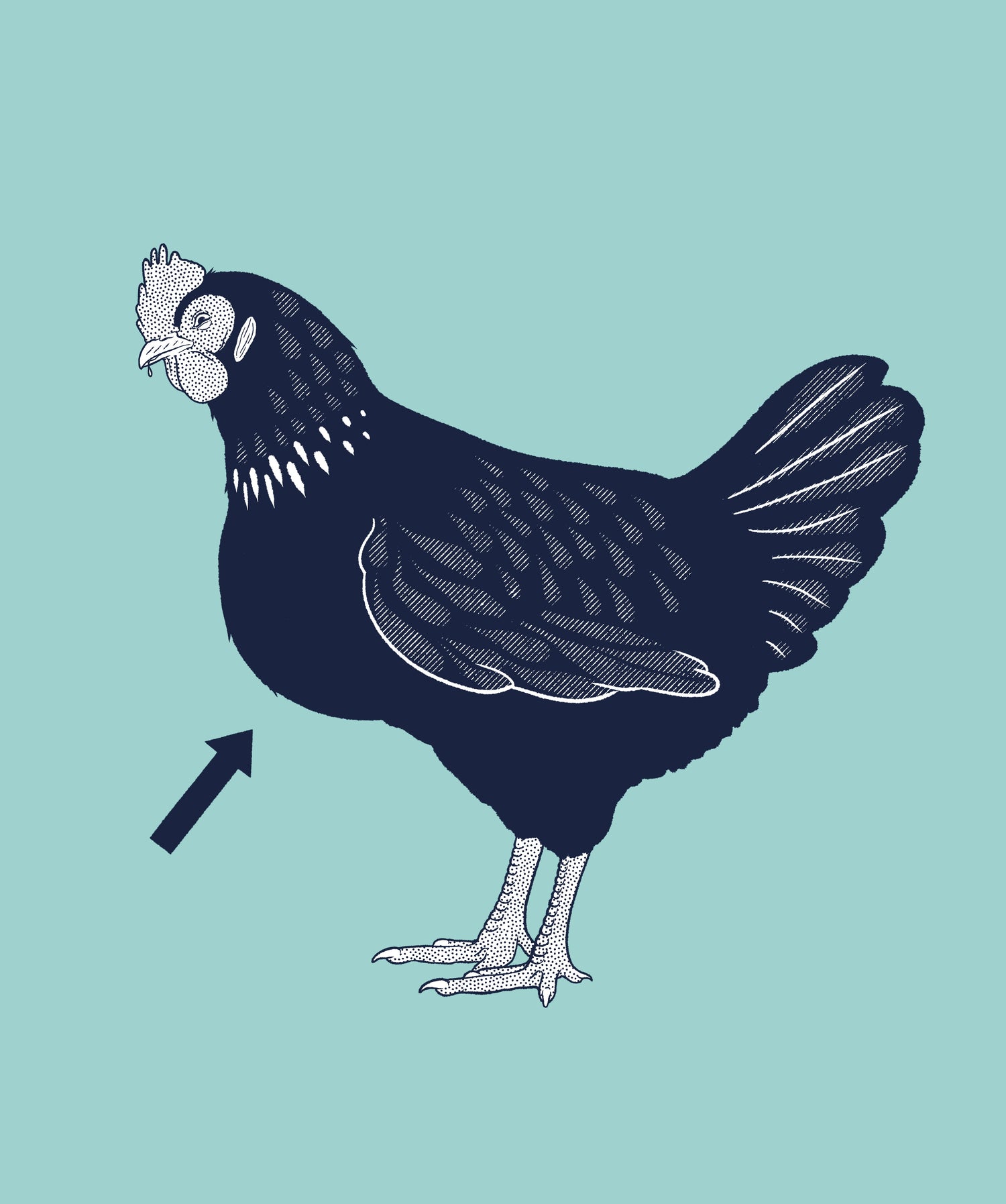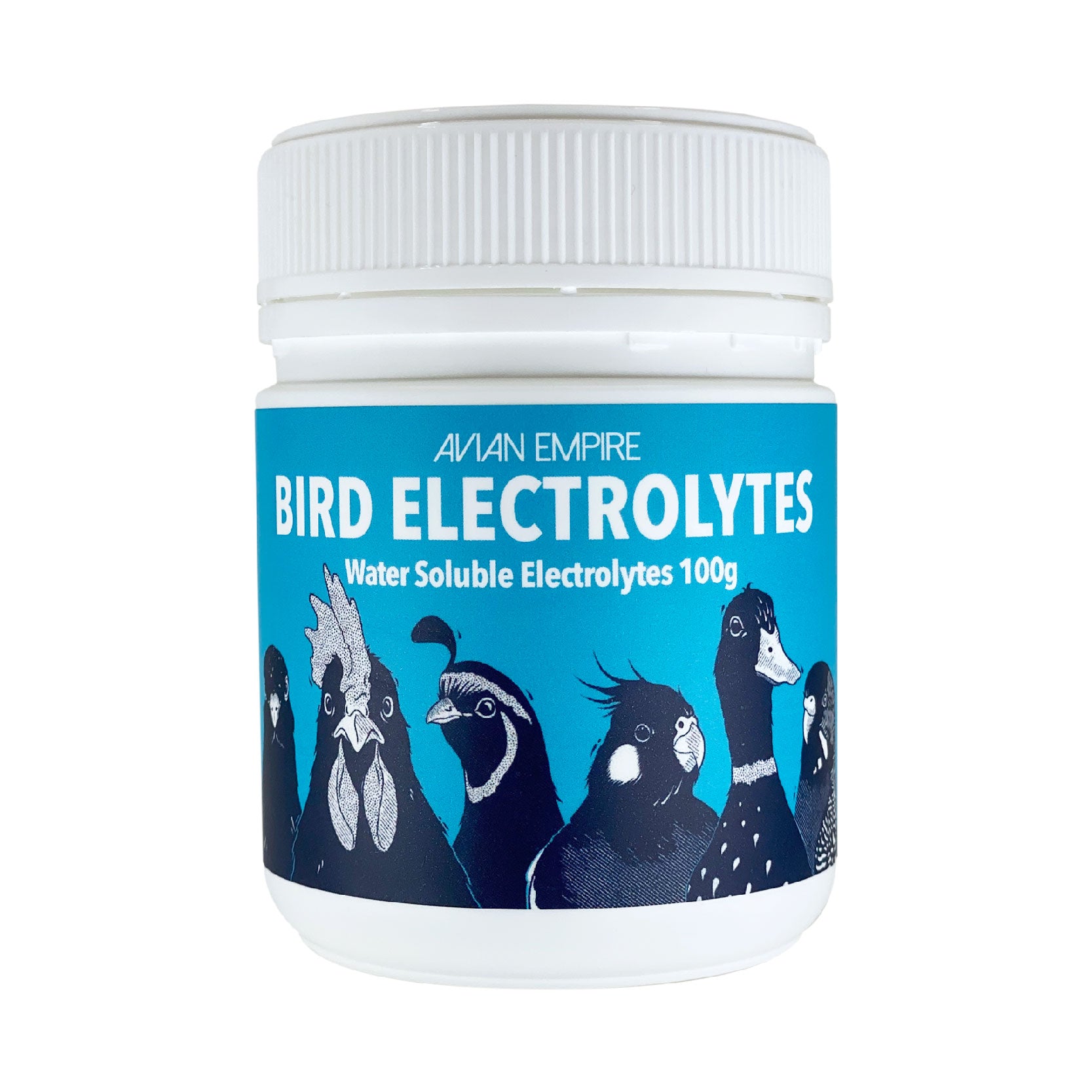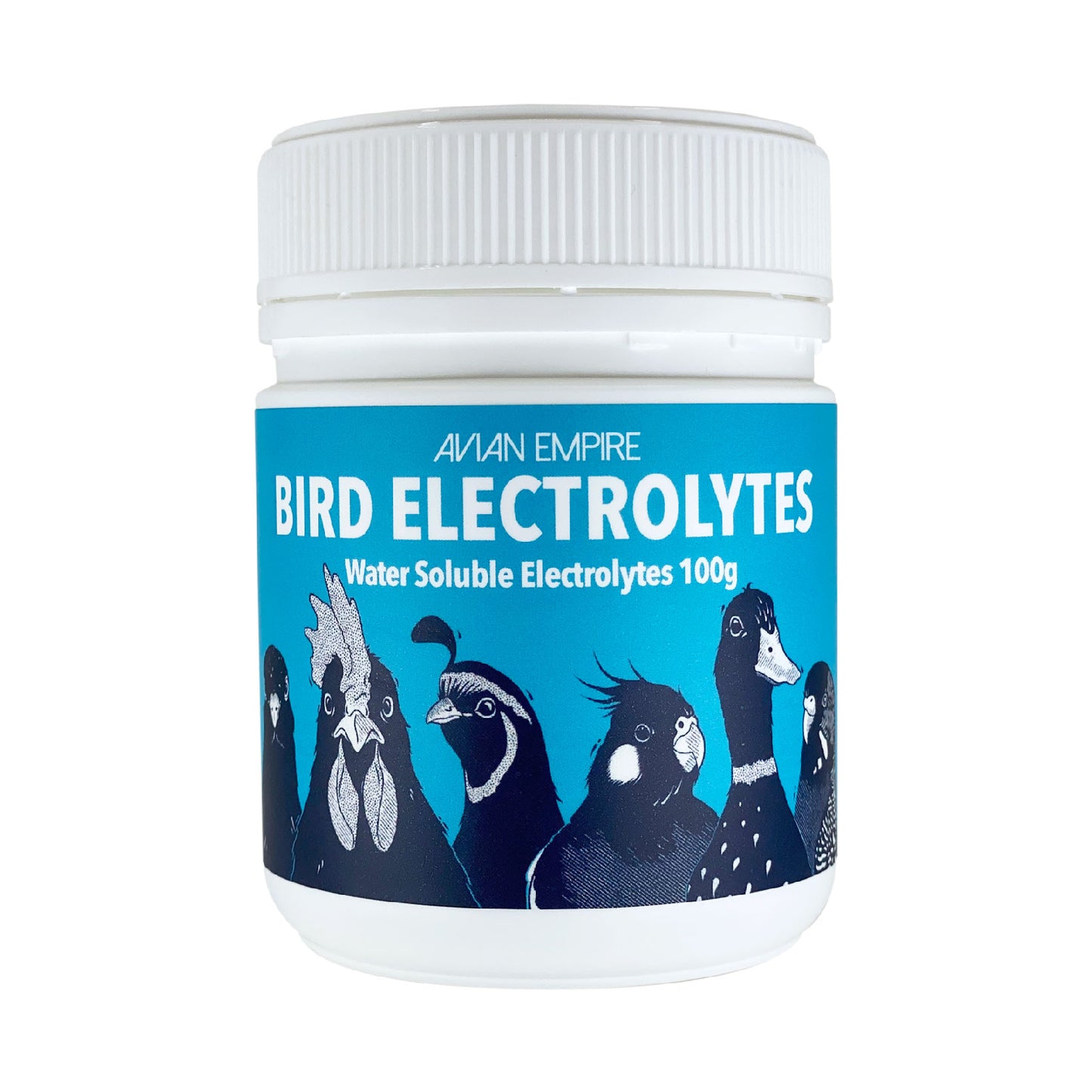

Crop Stasis
Crop stasis (also known as Sour crop, Slow crop, or Impacted crop) occurs when a chicken’s crop doesn’t empty at a normal rate, serving as a clinical sign of an underlying condition rather than a disease itself. The crop, located at the base of the neck, acts as a temporary storage pouch where the initial stages of digestion occur. Normally, food moves from the crop to the proventriculus (glandular stomach) and through the gastrointestinal tract via coordinated muscular contractions (gastrointestinal motility). When this process is disrupted—due to factors like impaction, obstruction, or impaired motility—food can back up in the crop, leading to stasis.
Crop stasis can be classified as either primary or secondary, depending on the underlying cause and whether the problem originates within the crop itself or is due to a systemic or external factor.
Clinical Signs
-
Enlarged or full crop.
-
Regurgitation (Spilling)
-
Excess drinking.
-
Bad Breath.
-
Lethargy and reduced activity.
-
Weight loss.
-
Dehydration.
-
Reduced or no appetite.
-
Changes in Droppings.
Causes of Crop Stasis
-
Parasitic infestations:
- High loads of internal parasites (e.g., worms and coccidiosis) causing intestinal damage and slowed motility.
Dietary issues:
- Ingestion of fibrous, tough, or indigestible materials (e.g., long grass, straw, hay, or twine).
- Compact feed blockages, such as dry or poorly soaked pellets.
- Lack of grit to aid digestion.
Gastrointestinal obstruction:
- Blockages further along the digestive tract caused by tumors, parasitic loads, or ingested objects (e.g., plastic, wood shavings, or plant material).
Infections:
- Fungal infections (Sour Crop): Overgrowth of Candida albicans due to prolonged food retention.
- Bacterial infections: Secondary infections in the crop or gastrointestinal tract.
Impaired gastrointestinal motility:
- Heat stress or extreme environmental temperatures.
- Overeating after a period of feed deprivation.
- Underlying diseases like Marek’s disease, heavy metal poisoning, or systemic illness.
Physical trauma:
- Injury to the crop or surrounding tissues affecting function.
Tumors or growths:
- Masses in the crop, esophagus, or gastrointestinal tract that impede food passage.
Treatments
-

The treatment for crop stasis depends on its underlying cause (primary or secondary) and severity. Here's a comprehensive list of treatment options:
1. Emptying the Crop
- Massage: Massage the crop by gently lifting and lowering it by 1–2 cm for 15–20 minutes. Repeat as often as possible to help manually empty the crop and encourage movement.
- Crop Lavage: Flushing the crop with warm saline or water to dilute contents.
- Manual Removal: In severe cases, crop contents may need to be manually emptied by a veterinarian.
- Surgical Intervention: Crop surgery (cropotomy) may be required for severe impactions or foreign objects.
2. Addressing the Underlying Cause
Impaction
- Remove fibrous or indigestible materials manually, with medication (metoclopramide) or via lavage.
- Offer soft, easily digestible foods during recovery (e.g., scrambled egg, peas, corn , mince or soaked pellets.).
Infections
- Sour Crop (Fungal Infection): Treat with antifungal medications such as nilstat
- Bacterial Infection: Use antibiotics prescribed by a veterinarian (e.g., Clostridium infections).
Parasitic Infestations
- Treat with dewormers if high parasite loads are contributing to stasis.
Systemic Diseases
- Address systemic conditions like Marek’s disease, heavy metal poisoning, or organ dysfunction under veterinary guidance.
3. Supportive Care
- Soft high protein diet: Alongside regular feed add easy-to-digest food options like scrambled egg, peas, corn , mince or soaked pellets. Note: it's important to keep your bird eating during crop stasis, small and often is the key.
- Hydration: Ensure constant access to clean water. Tip: If your bird is drinking excessively, offer small amounts of water at a time or replace the water with skinned cucumber to help prevent regurgitation or spillage.
- Fennel tea has natural properties that promote digestive motility, making it a useful remedy for aiding a slow crop.
- Probiotics: Support gut health by adding bird-safe probiotics to their feed or water.
4. Medications
- Prokinetics: Medications like metoclopramide may be used to stimulate crop and gastrointestinal motility (veterinarian-prescribed).
- Pain Relief: NSAIDs like meloxicam or Aspirin may be prescribed to alleviate discomfort or inflammation.
5. Environmental Adjustments
- Warmth: Keep the bird warm to reduce energy expenditure (e.g., use a heat lamp or warm enclosure).
- Isolation: Separate the bird from the flock to minimize stress and monitor its recovery closely. Droppings will tell you how your bird is doing.
6. Preventing Secondary Issues
- Monitor for Aspiration: During lavage or regurgitation, ensure the bird does not aspirate crop contents into the respiratory tract.
- Hygiene: Keep the bird’s environment clean to prevent secondary infections during recovery.
7. Recovery Monitoring
- Check crop size and fullness regularly to ensure it’s emptying properly.
- Monitor the bird’s weight, droppings, and overall behavior to track recovery progress.
Important: Never tip your bird.
You should not tip your bird upside down to empty the crop because it increases the risk of aspiration, where the bird inhales fluid or material into its lungs, potentially causing serious respiratory issues or death. Additionally, this method can cause unnecessary stress and harm to the bird. Safer alternatives, such as crop massage, fennel tea or veterinary intervention, are recommended.
Prevention
-
Control internal parasites.
-
Maintain clean water.
-
Acidify the water (pH 5.5- 7)
-
Provide a balanced diet.
-
Avoid overfeeding.
-
Keep the grass available short.
-
Inspect for foreign objects.
-
Regular health checks.
-
Good hygiene practices.
-
Minimise stress.
-
Provide probiotics.

Avian Empire
BIRD ELECTROLYTES - 100g
Share



